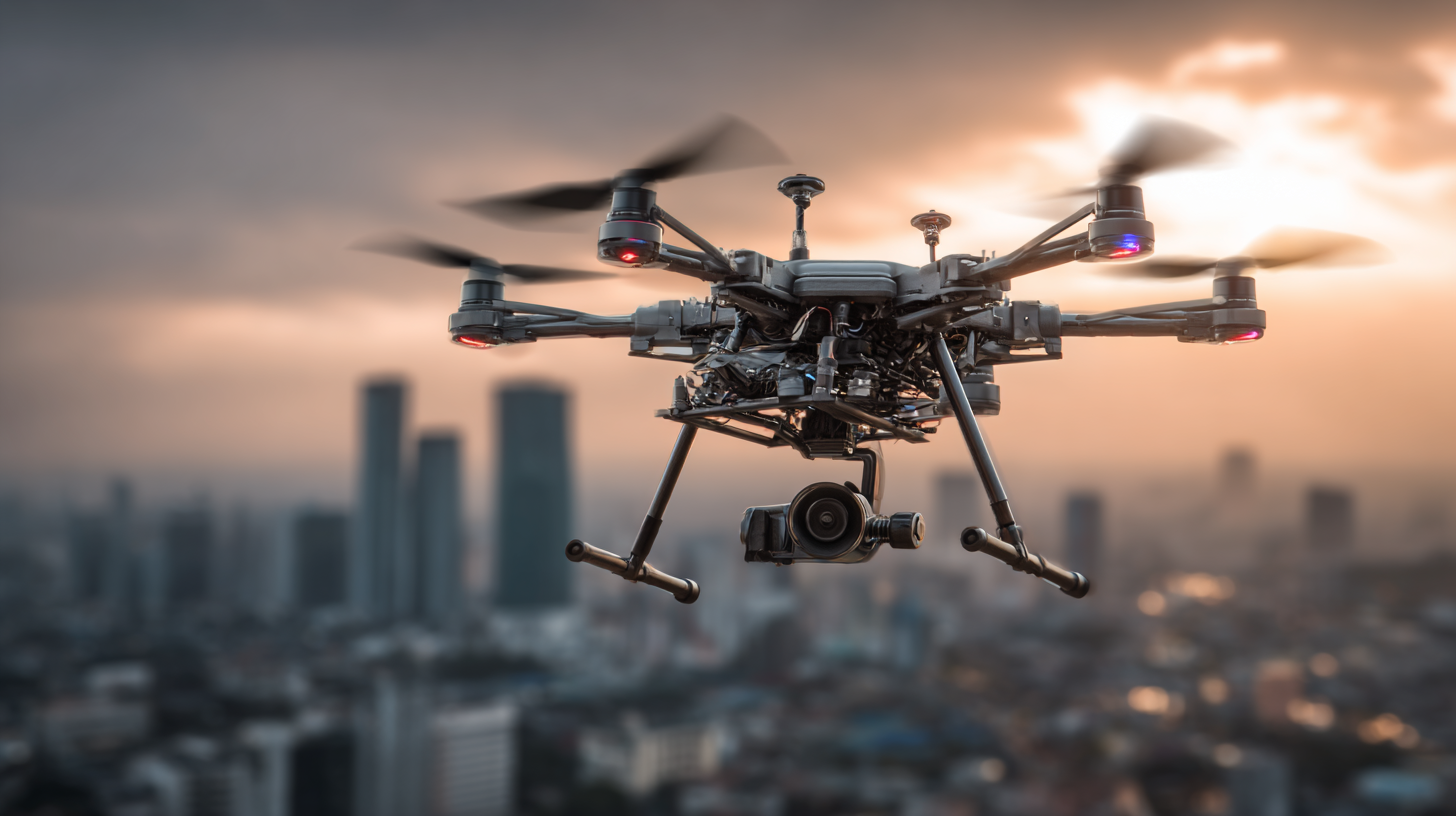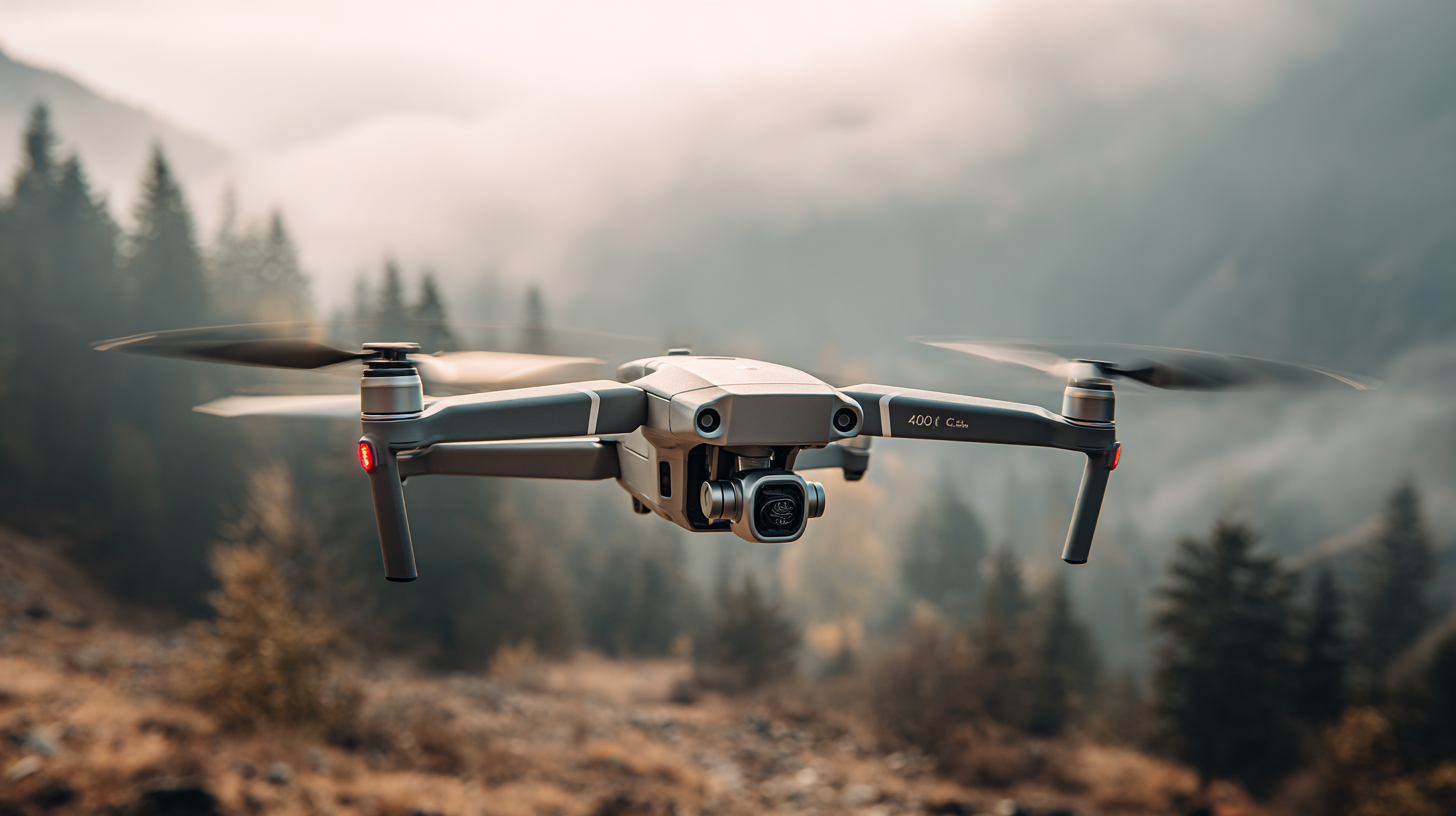Navigating the Future: The Ultimate Guide to the Best Drone Drones in 2025's Technological Landscape
As we stand at the cusp of a new technological era, the evolution of Drone Drones is set to redefine various industries and our daily lives. By 2025, advancements in drone technology promise to bring innovative solutions to challenges ranging from transportation logistics to environmental monitoring. As we explore this exciting landscape, it becomes crucial to understand not just the best drones currently available, but also the emerging trends that will shape their future capabilities.
From autonomous flying systems to enhanced safety features, the next generation of Drone Drones will be equipped with state-of-the-art technology, ensuring they are faster, smarter, and more efficient than ever before. Join us on this journey to navigate the future of Drone Drones, where we will delve into the best models, cutting-edge features, and how they are poised to transform the way we perceive and interact with the world around us.
The Rise of Chinese Manufacturers: Dominating the Global Drone Market in 2025
In 2025, the global drone market is experiencing a significant shift as Chinese manufacturers solidify their dominance. Companies like DJI and EHang are not just leading in production volume; they are also at the forefront of innovation, pushing the boundaries of what drones can achieve. This surge is driven by a combination of advanced technology, competitive pricing, and a robust supply chain that allows for rapid scaling. As these manufacturers enhance their product offerings, they introduce sophisticated features such as improved AI capabilities, longer battery life, and enhanced safety protocols that are attracting consumers worldwide.
The rise of Chinese drone manufacturers also presents challenges for their international competitors. Traditional leaders in the drone market, primarily in North America and Europe, must adapt to this new landscape quickly. They face pressure not only to innovate but also to lower costs to maintain market share. Regulatory hurdles and security concerns around foreign-made drones could shape the competitive environment, forcing established brands to rethink their strategies and potentially collaborate with local firms to meet consumer demands effectively. As the technological landscape evolves, understanding and adapting to these changes will be crucial for anyone looking to navigate the future of drones.
Navigating the Future: The Global Drone Market in 2025
Technological Innovations: How Chinese Drones are Setting New Industry Standards
In the rapidly evolving world of drone technology, Chinese manufacturers are at the forefront, driving innovations that set new industry standards. As we look toward 2025, these advancements have transformed the capabilities of drones, making them more efficient, versatile, and user-friendly. From enhanced flight time to improved sensing technologies, Chinese companies are not only pushing the envelope in hardware design but also in software integration, creating drones that can seamlessly operate in complex environments.

One of the most significant innovations is the development of AI-powered drones that can autonomously navigate and perform tasks with minimal human intervention. This leap in technology allows for applications across various sectors including agriculture, logistics, and surveillance. Furthermore, the emphasis on sustainability has led to the creation of environmentally friendly alternatives, such as solar-powered drones, which aim to reduce carbon footprints while delivering exceptional performance. As these cutting-edge solutions continue to emerge from China, they are reshaping the global drone market, influencing design and operational standards worldwide, and paving the way for smarter, more connected aerial technologies.
Market Trends: Forecasting the Growth of Drone Exports from China by 2025
The drone market is experiencing a transformative phase, with China's exports projected to reach unprecedented levels by 2025. According to a report by the China Academy of Aerospace Aerodynamics, the drone export value could exceed $16 billion, driven by advancements in technology and increasing global demand. As more sectors, including agriculture, logistics, and surveillance, recognize the value of drones, the competitive landscape is set to intensify, making China a pivotal player in the drone manufacturing sector.
Market trends indicate a growing preference for specialized drones, with predictions from the International Air Transport Association suggesting that commercial drones will dominate the market. By 2025, consumer and commercial applications of drone technology are expected to see a compound annual growth rate (CAGR) of over 25%. The integration of AI and machine learning into drone systems will enhance their functionalities, further contributing to the increase in exports. As countries around the world gear up for wider adoption of drone technology, China's strategic investments in research and development position it well to meet this rising demand.
Regulatory Framework: Navigating Compliance in China's Drone Export Landscape
As the global drone market evolves, understanding the regulatory framework surrounding drone exports in China becomes increasingly crucial. According to the China Civil Aviation Administration (CCAA), the drone industry is projected to reach a valuation of $23 billion by 2025, with nearly 60% of this growth attributed to export activities. This rapid expansion necessitates strict compliance with both local and international regulations to ensure safety and operational efficiency in drone operations.
China's approach to drone export regulations is characterized by a multi-tiered framework. The government has implemented comprehensive measures, including mandatory certifications and permissions that manufacturers must secure before exporting their products. In 2022, over 40% of Chinese drone manufacturers reported needing to navigate complex regulatory environments in different countries, which highlights the importance of staying updated with international compliance standards. Furthermore, a report by MarketsandMarkets indicates that stringent regulatory requirements could shape future innovation, as companies will need to adapt their designs to meet diverse regional regulations while still competing in the global market.
Navigating the Future: The Ultimate Guide to the Best Drone Drones in 2025's Technological Landscape
| Drone Type |
Max Flight Time (min) |
Max Range (km) |
Camera Resolution (MP) |
Payload Capacity (kg) |
| Commercial Surveying Drone |
45 |
10 |
20 |
2 |
| Delivery Drone |
30 |
15 |
12 |
5 |
| Agricultural Drone |
40 |
8 |
16 |
10 |
| Racing Drone |
20 |
5 |
4 |
0.5 |
| Photography Drone |
35 |
12 |
24 |
1.5 |
Competitive Analysis: Comparing Chinese Drones to Global Rivals in 2025
As we look to 2025, the competitive landscape of the drone industry is increasingly shaped by advancements in technology. A recent report by ResearchAndMarkets projects that the global drone market will reach approximately $42.8 billion by 2025, with a significant portion attributed to innovations stemming from Asian manufacturers, particularly in China. Chinese drones are expected to dominate the commercial sector, fueled by companies like DJI, which retains a market share of nearly 70%. This dominance stems not only from advanced manufacturing techniques but also from aggressive pricing strategies that are difficult for global rivals to match.
In contrast, Western companies are focusing on niche applications and regulatory compliance to carve out market spaces. For instance, North American firms like Skydio and Parrot are prioritizing advanced software capabilities and autonomous features, appealing to sectors such as agriculture and emergency services. According to DroneAnalyst's recent survey, 61% of U.S. drone users highlight software and functionality as their primary purchase considerations, marking a strategic shift from hardware alone. This evolving competitive dynamic underscores the importance of innovation and strategic differentiation amidst the growing prominence of Chinese drones.
